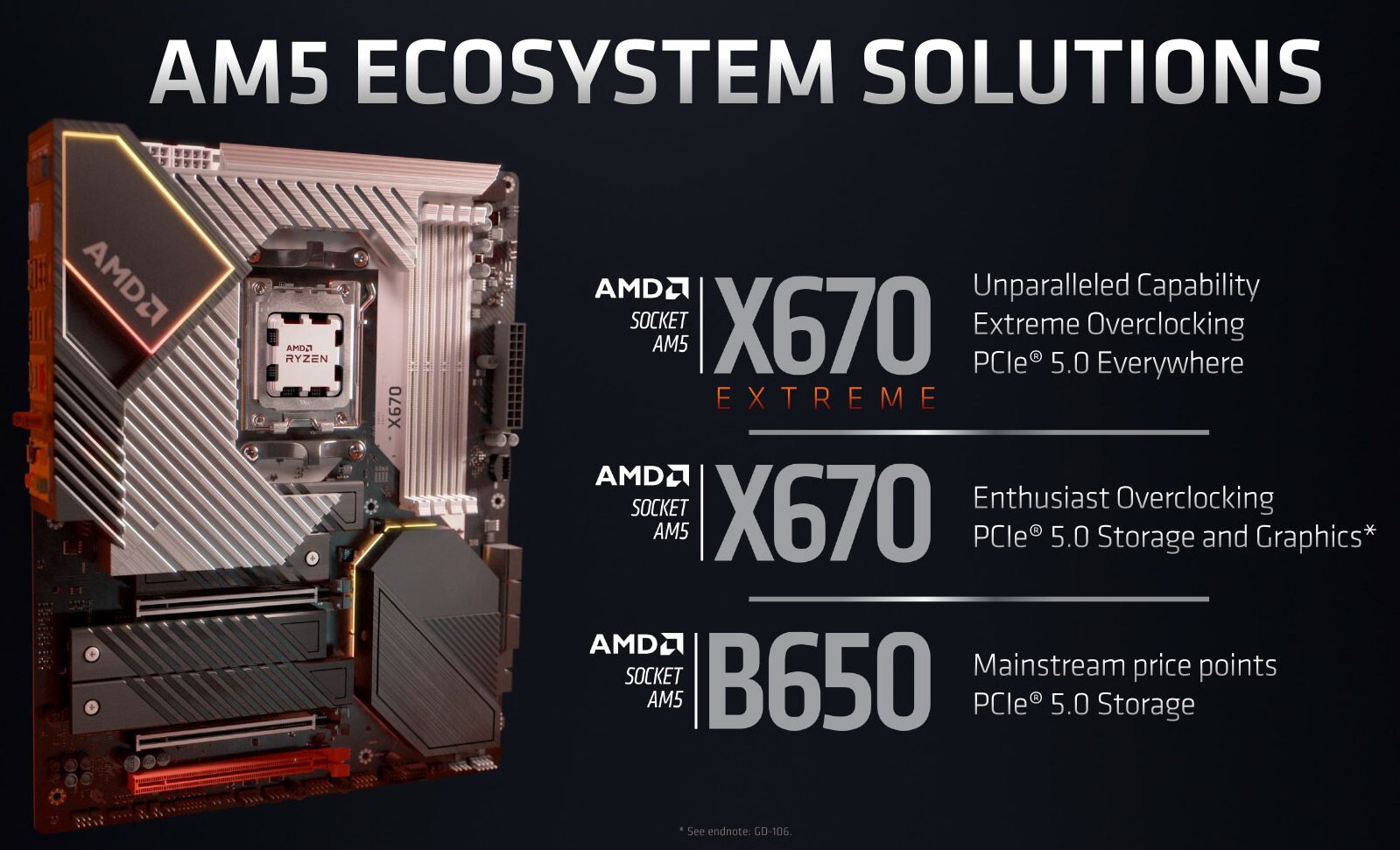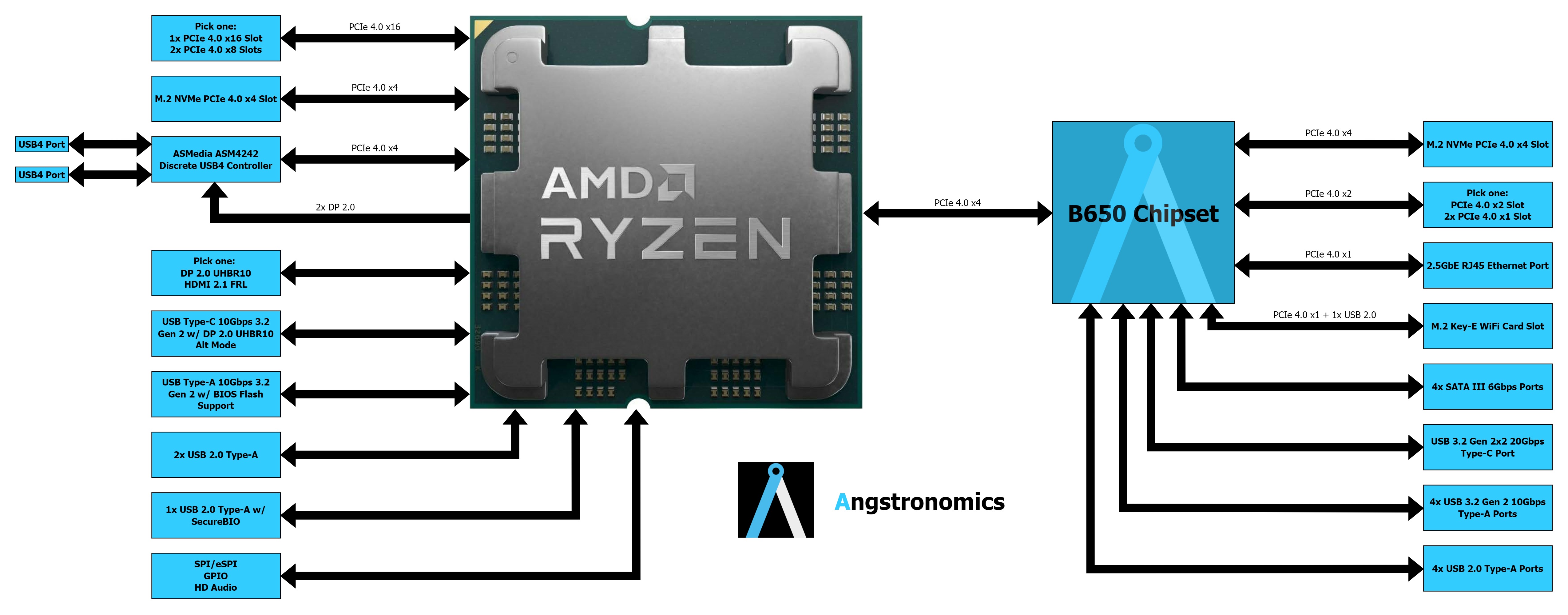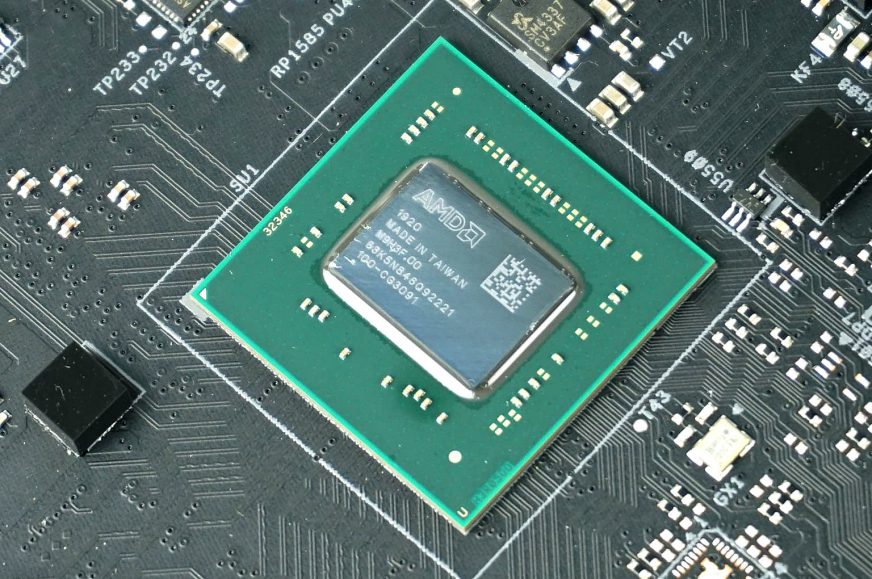Cheaper platform with full PCIe 5.0 as an alternative to X670E
Last week, AMD unveiled Ryzen 7000 processors for AM5 socket, coming with PCI Express 5.0 support. However, only the X670E and X670 are supposed to allow a PCIe 5.0×16 slot for the GPU. Boards with the cheaper and more low-power B650 chipset will only have PCIe 4.0×16. It looks like there might be a saving grace though. According to unofficial leaks, there could be a B650E alongside the B650 that will also support PCIe 5.0×16 for GPUs.
According to information from WCCFtech, there should eventually be five chipsets, not just three. The fourth one was already kind of expected, namely the A520 variant, on which the cheapest boards not supporting overclocking will be built. But allegedly that’s not all, and there will be another member of the AM5 chipset group, called B650E – or B650 Extreme.
And the role of this chipset would seem to be quite analogous to the role of the X670E chipset relative to the regular X670. The regular mainstream B650 platform will only provide PCIe 4.0×16 for graphics (but PCIe 5.0 ×4 for SSDs, thankfully). In contrast, boards with the B650E chipset will be fitted with better PCBs and components, so they will provide that PCIe 5.0 ×16 slot for graphics as well. So they should be “PCIe 5.0 everywhere” in the sense that slots for GPU and NVMe SSDs brought out from the CPU are Gen5 (otherwise the additional connectivity coming up from the chipset itself will no longer be PCIe 5.0).
It may seem confusing why there are so many chipsets when the B650E clashes to some extent with the X670 (without the E). However, in reality the X670E and X670 are just one chipset, only the rest of the board is different. We assume the same is the case with the B650E and B650, so in effect there are only two chipsets (three with the A520). Thus, there probably isn’t going to be any major fragmentation in the chipsets themselves, and those “E” versions are perhaps just a signal to the customer how the board is equipped, rather than making them a separate platform with extra suport burden and so on.
So the point of the B650E would be to provide a platform with a complete PCIe 5.0×16 that would be cheaper and more power efficient versus the X670 and X670E. On the other hand, these two chipsets, as a unique feature, would provide stronger secondary connectivity – more PCIe 4.0 lanes, PCIe 3.0, SATA and USB ports. So there could be a place for both in the market, as long as AMD and/or board manufacturers don’t want to use PCIe 5.0 as a means of forcing customers to buy the most expensive X670E-class boards.
Price-wise, the B650E chipset boards should probably be above the B650 platform boards, but against the X670 they would still probably be cheaper. On average at least, as always there will be some variance, so some more expensive models could be above cheaper X670 implementations. According to leaker Moore’s Law is Dead, regular B650 boards should be around $130–230 (€155–260), B650E perhaps $250–330 (€280–380), and X670 mostly $270–350 (€305–395), but supposedly there could also be some $250 exceptions. But this is preliminary rumor, so take it with a grain of salt for now. The X670E boards could reportedly cost anywhere from $300 to $500 (330–560 €).

Likely connectivity of the B650E chipset
The connectivity of the X670E and X670 chipsets themselves is identical (and the only difference is the implementation of PCIe 5.0 or PCIe 4.0 slots). It is therefore likely that for B650E, the chipset’s own connectivity (i.e. that which does not come from the CPU) will also be identical to the B650. That is, the chipset would have a PCIe 4.0 ×4 uplink to the CPU and would itself provide a pair of PCIe 4.0 ×4 interfaces. In addition to these, there would be four PCIe 3.0 ×4 lanes serving for Wi-Fi or Ethernet controllers, for example.
The chipset also supports up to four SATA ports, but these are shared, so they take away from the PCIe 3.0 lanes. So in some cases enabling the SATA ports may disable some other interfaces on the boards, or it’s possible that some B650 and B650E boards may only ever have two SATA ports (but again, maybe three NVMe M.2 slots).
See: AMD X670, X670E, B650 and AM5 chipsets for Zen 4: PCIe 5.0 and other connectivity in detail
There will be six USB 3.2 Gen 2 (SuperSpeed USB 10Gbps) ports supported by this chipset, or optionally four of these 10Gbps ports and one 20Gbps USB 3.2 Gen 2×2 (SuperSpeed USB 20Gbps). There will be six additional USB 2.0 ports for slower additional connectivity. Three more USB 3.2 Gen 2 (SuperSpeed USB 10Gbps) ports on the platform can be provided by the processor. But according to some information, their connectivity is shared with the video outputs, so boards with multiple outputs will lose some of these three ports. But it should perhaps be possible to bring them out as USB-C, where such a port will then support both video (via DisplayPort alternate mode) and USB 3.2 Gen 2 combined.

It can be seen that this platform is relatively limited and its connectivity is set just right for the needs of mainstream boards, while a more demanding user insisting on connecting 15 USB peripherals and/or four different PCI Express cards at once will not be satisfied. The most limited resource seem to be the SATA ports, compared to the AM4 platform. AMD may be betting that optical drives, HDDs, and SATA SSDs are slowly becoming a thing of the past.
But for gaming PCs in particular, the B650E could be more than enough. It will allow, with the help of CPU connectivity, to have up to four M.2 slots for NVMe SSDs (two PCIe 5.0 ×4 and two PCIe 4.0 ×4, or ×4 and ×2), or three M.2 slots and a USB4 controller, and a PCIe 5.0 ×16 slot for graphics. We don’t yet know if, like with B550 before, this interface will support splitting into ×8/×8. Gaming PCs will probably mostly make do with this, with boards perhaps often having at least one PCIe 4.0 ×4 or ×2 slot (instead of one M.2 or with shared connectivity) for a video capture card, for example.
Solution for Mini-ITX?
So for many users, the B650E could be the sweet-spot option where they get full-fledged PCIe 5.0, but at a smaller premium than with the X670E. Also, this board will not have increased power draw due to the inclusion of the two Promontory 21 chips that make up the X670(E) kit.
This B650E chipset should also be optimal for Mini-ITX boards. Fitting X670(E) on them probably won’t make sense, because its connectivity is almost impossible to utilise in this format. So an enthusiast high-end Mini-ITX platform will probably be built on the B650E.
Sources: WCCFtech, Moore’s Law is Dead
English translation and edit by Jozef Dudáš, original text by Jan Olšan, editor for Cnews.cz
⠀








